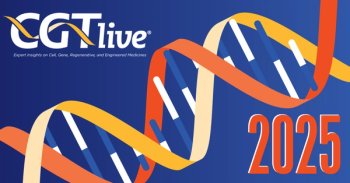
CD4 Cell Counts Increased, Severe Immunodeficiency Decreased From 2002-2015
From 2002 to 2015, CD4 cell counts at the start of combination antiretroviral therapy (cART) increased, and the proportion of individuals with severe immunodeficiency at the start of cART decreased among all income groups, according to a study published in Clinical Infectious Diseases.
From 2002 to 2015, CD4 cell counts at the start of combination antiretroviral therapy (cART) increased, and the proportion of individuals with severe immunodeficiency at the start of cART decreased among all income groups, according to a study published in
The authors of the study analyzed the International Epidemiology Databases to Evaluate AIDS (IeDEA), which pools clinical and epidemiological data on people with HIV who are receiving cART, and the Collaboration of Observational HIV Epidemiological Research in Europe (COHERE), a collaboration of European HIV cohorts.
The study included all individuals age 16 and older if they had a recorded cART initiation date and sex, were treatment naïve, and started therapy between 2002 and 2015. cART was defined as 3 or more antiretroviral drugs, from 2 drug classes. A total of 951,855 adults from 16 low-income countries (LICs), 11 lower-middle-income countries (LMICs), 9 upper-middle-income countries (UMICs), and 18 high-income countries (HICs) were included.
Results showed that the estimated median CD4 cell count at the start of cART from 2002 to 2015 varied across income groups. The median CD4 cell count at cART initiation increased in LICs by 268%, from 78/µL to 287/µL; in LMICs by 136%, from 99/µL to 234/µL; in UMICs by 338%, from 71/µL to 311/µL; and in HICs by 102%, from 161/µL to 327/µL.
In LICs, LMICs, and UMICs, the increases were more prominent in women (277% in LICs, 153% in LMICs, and 391% in UMICs) than in men (248% in LICs, 99% in LMICs, and 261% in UMICs). Meanwhile the authors found the opposite (68% increase in women and 115% in men) in HICs.
The biggest drop in the proportion of individuals with severe immunodeficiency at the start of therapy was seen in LICs, with a decline from 95% in 2002 to 31% in 2015. There was a decline from 75% to 20% in LMICs, 79% to 26% in UMICs, and 59% to 29% in HICs. However, these trends started to plateau at the end of the period.
According to the authors, the increase in CD4 cell counts at the start of cART can be largely attributed to the significant increase in HIV testing in many countries, and the steeper increase in CD4 cell count among women may be attributed to increased testing coverage to prevent mother-to-child transmission.
While CD4 cell counts have increased in all country income groups, “the median CD4 cell count at cART start generally remained below 350/µL in 2015 and the decline in severe immunodeficiency appears to have plateaued in some countries.” The authors concluded: “Clearly, substantial additional efforts and resources will be needed to achieve early diagnosis, rapid linkage to care, and prompt initiation of cART globally.”
References:
The IeDEA and COHERE Cohort Collaborations. Global trends in CD4 cell count at the start of antiretroviral therapy: collaborative study of treatment programs. Clinical Infectious Diseases. Published online ahead of print January 25, 2018. DOI: 10.1093/cid/cix915.
Newsletter
Stay at the forefront of cutting-edge science with CGT—your direct line to expert insights, breakthrough data, and real-time coverage of the latest advancements in cell and gene therapy.




